Opening up the urban experience
MINI LIVING'S URBAN CABIN demonstrates the power of multifunctional design
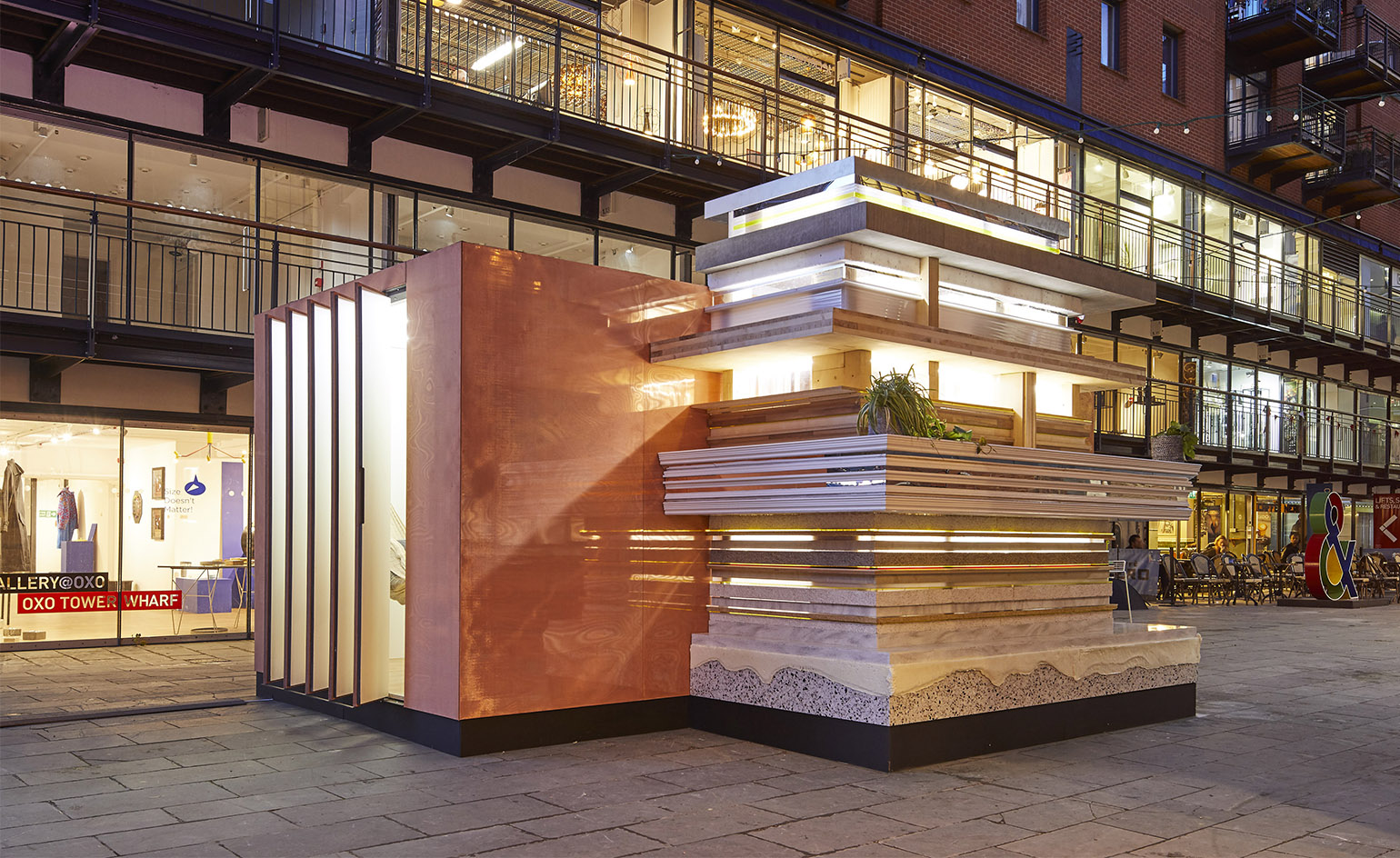
What is the future of city living? MINI LIVING is about extending the expertise of MINI design into the urban realm to create initiatives that explore new ways of living, working and interacting with the modern city environment. For this year’s London Design Festival, MINI LIVING has created URBAN CABIN, an ultra-compact installation that demonstrates the power of multifunctional design when space is at a premium. A collaboration between MINI and architect Sam Jacob Studio, the cabin is installed in the OXO Tower Wharf Courtyard. Jacob was a co-founder of the now-defunct FAT Architects and shares MINI’s philosophy of playful efficiency. As an acclaimed designer, educator and polemicist, his projects, such as a hairdressing salon with integral art gallery, demonstrate a fascination with mixed-up typologies as well as a belief in using design to create both meaning and place.
URBAN CABIN is a creative new take on communal space, combining both work and pleasure functions. Shaped in the MINI LIVING studio, this compact, 15 sq m modular space comprises of two mirrored and copper mesh structures. Intended to evoke London’s fluid, frantic but always essential relationship with culture and creativity, each URBAN CABIN is divided into a shared kitchen and an experience room. In London, Jacob’s experience room is a micro-library, a space that highlights how many precious city resources, such as the traditional library, are now under threat.
Jacob describes the space as ‘emulating London's stacked skyline’, both in terms of form and content. MINI LIVING’s creative lead, Oke Hauser, hopes the library will kindle debates and connections. The reading list – including a Wallpaper* sanctioned set of titles – contains books old and new that have been chosen to evoke the spirit of London life through the centuries. The book swap is a literal application of the sharing economy, a catalyst for positive change that helps to connect, inspire and engage through shared stories and histories.
URBAN CABIN’s micro-house scale also addresses that other great capital absence, space. URBAN CABIN’s shared kitchen is a social hub, reflecting the fact that making and sharing food continues to be an integral element of London life. An expanding table and louvered walls allow the space to grow outwards or contract inwards depending on demand.
MINI’s spiritual origins are in the creation of the world’s original compact city car. MINI LIVING takes that heritage to another level, exploring the social, architectural and cultural role of the spaces inside and outside our cars, and how design can improve these for the better. By combining the company’s design skills with collaborators from every creative field, MINI LIVING explores new ways to work, live, and play in the city. Cities are about connections, and URBAN CABIN infuses the marque’s spirit of fun, adventure and innovation into a place for coming together; a space in which to eat, socialise, learn and share our experiences.
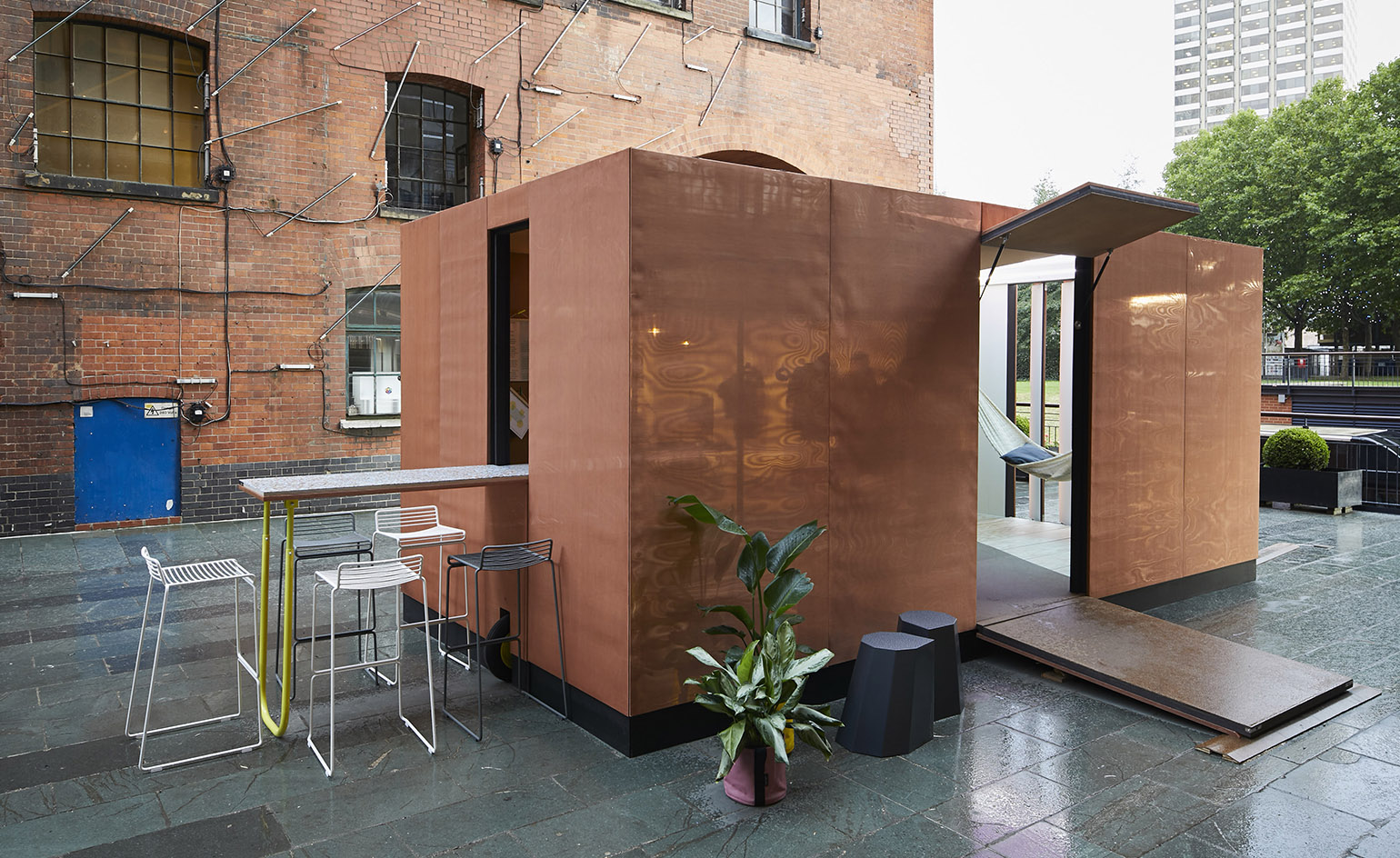
The kitchen, left, features a table that extends the dining area out into the public realm for shared meals and more
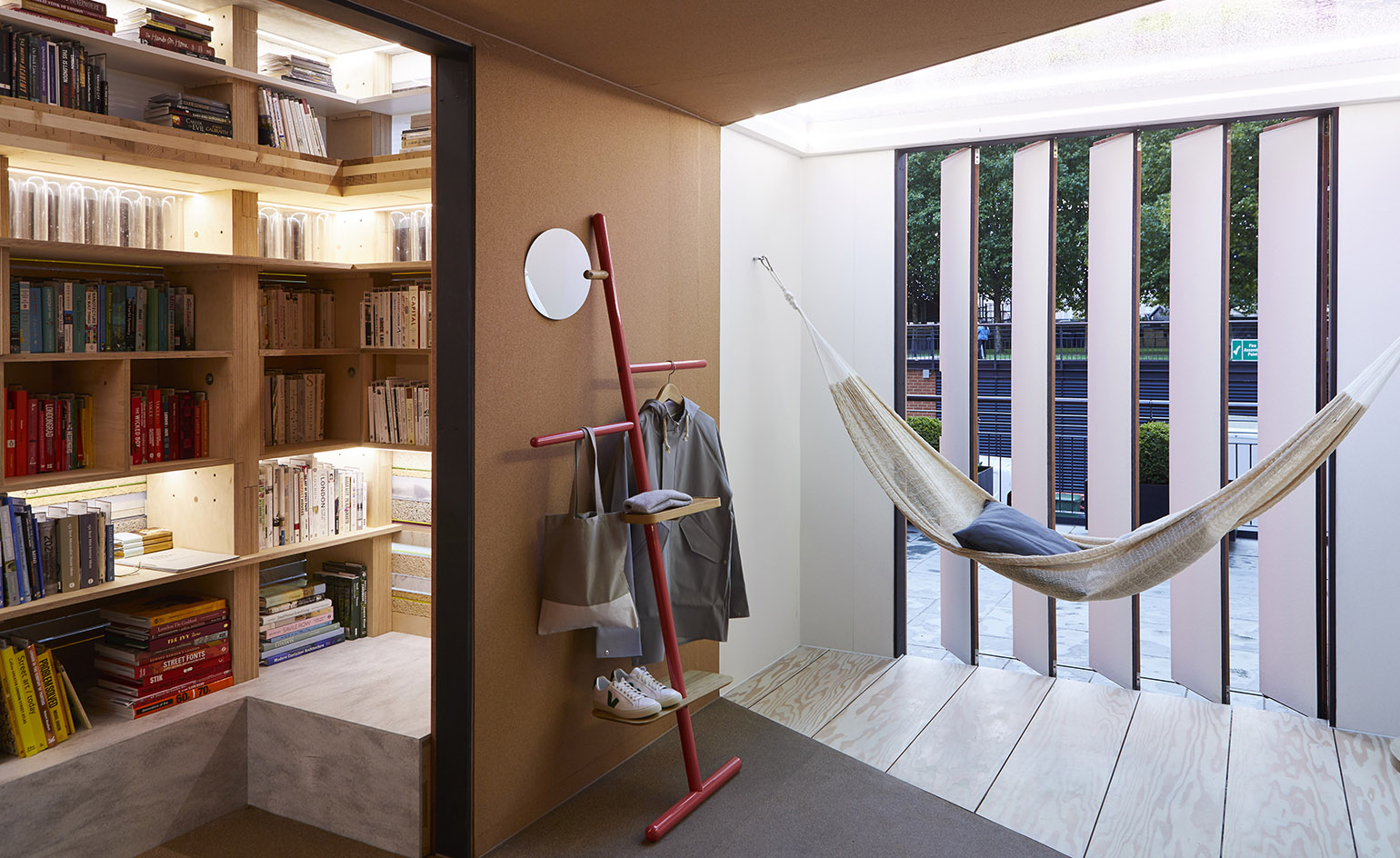
A micro-library offers insights in London, past, present and future, to read, share and discuss. The slatted wall of the living space allows the room to be opened or closed to the street
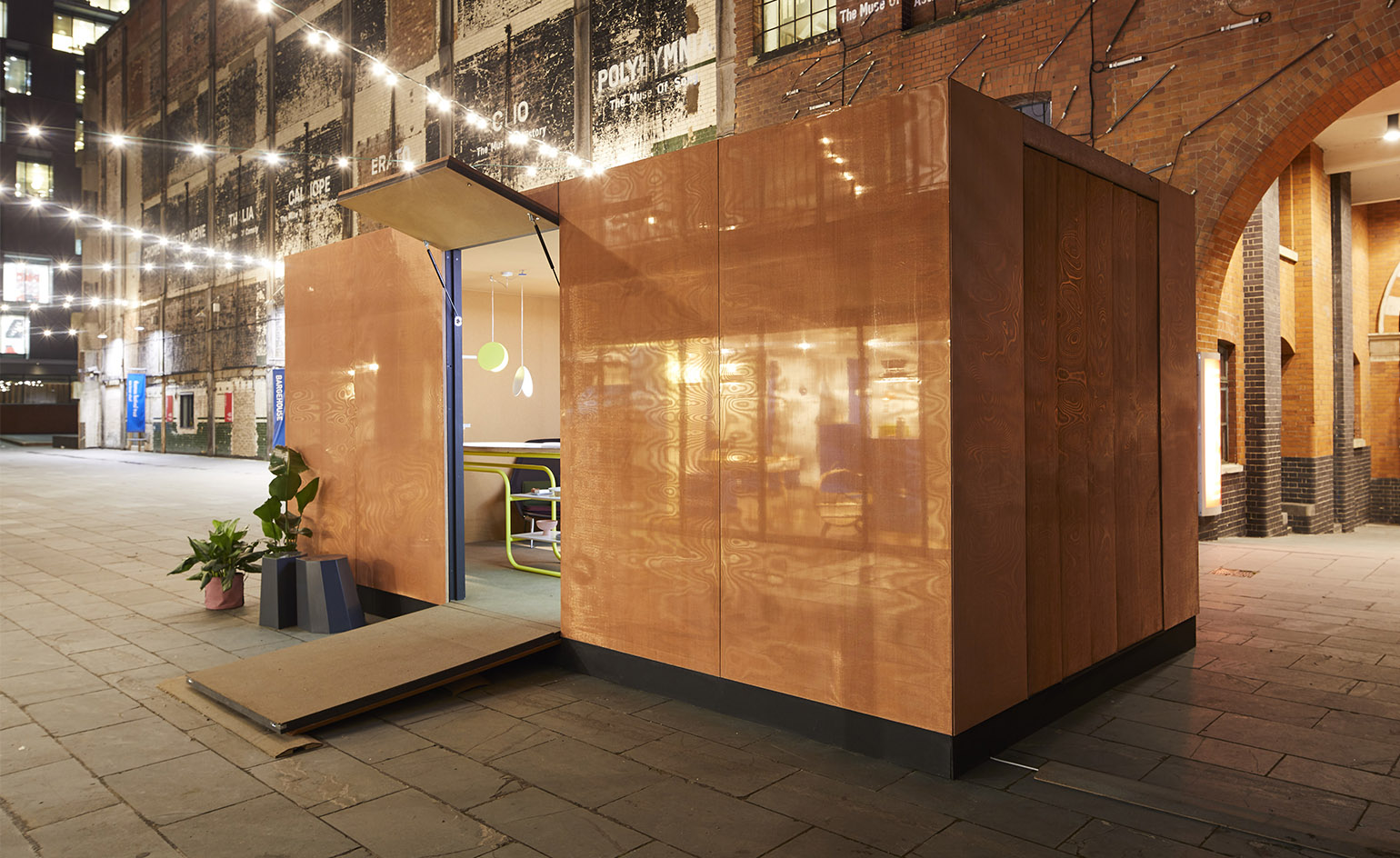
With slats closed, the copper-clad URBAN CABIN becomes an inscrutable object in the cityscape, the copper skin reflecting and distorting its surroundings
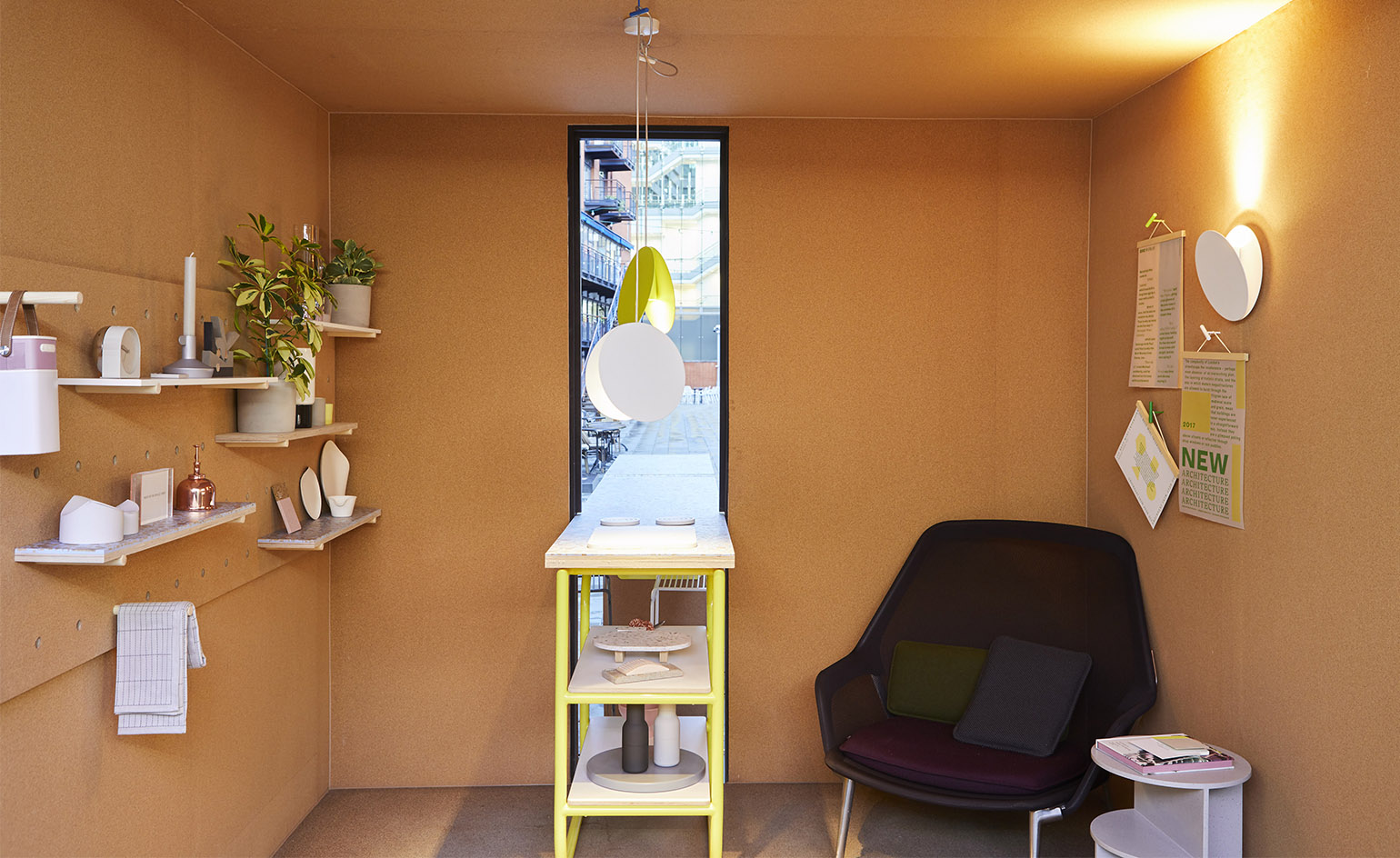
The kitchen is compact and perfectly planned. The terrazo table doubles as a work surface and the adjustable shelving give the space an ad-hoc, flexible feel, despite its scale
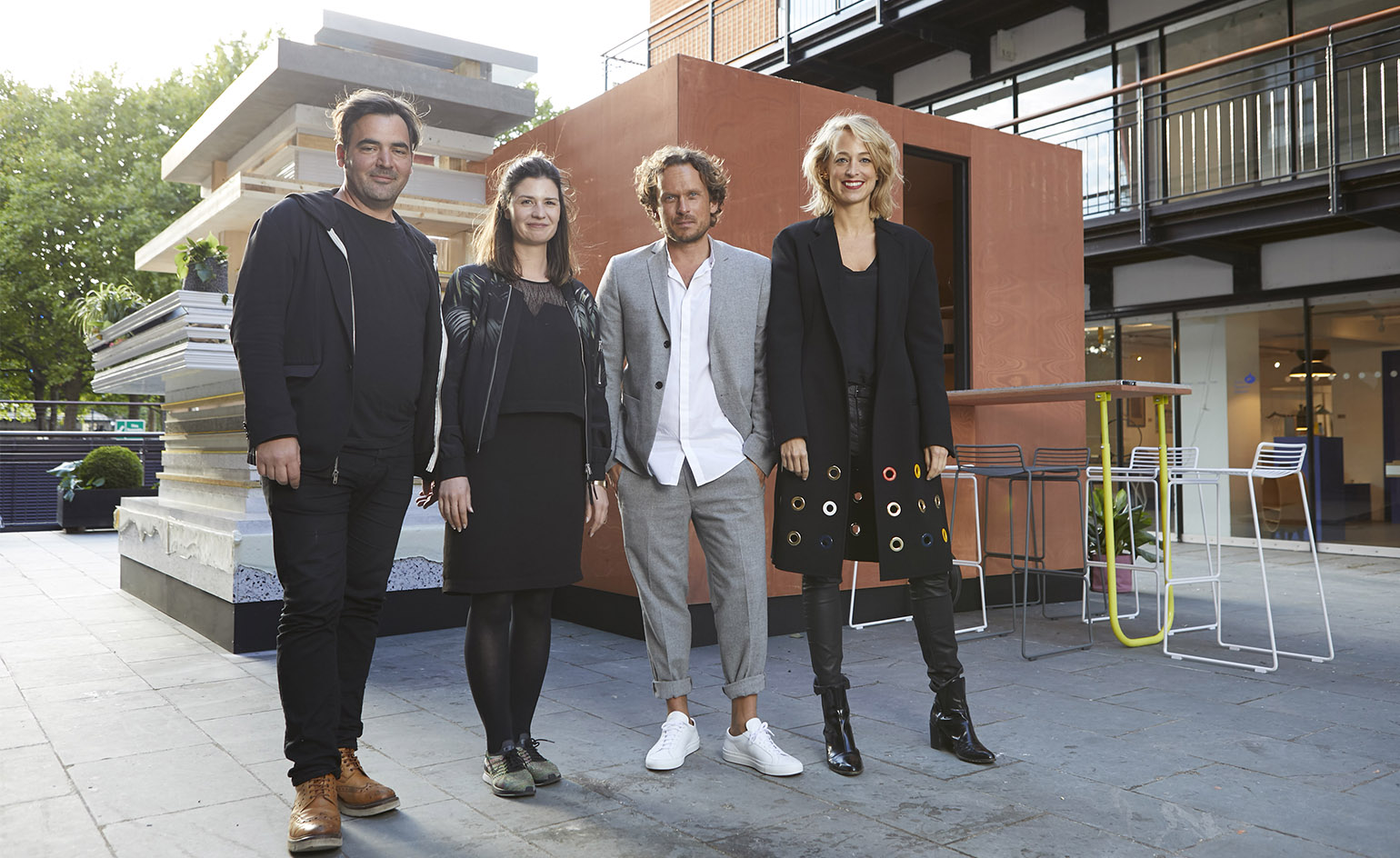
From left to right, architect Sam Jacob, MINI LIVING experience designer Corinna Natter, MINI LIVING creative lead Oke Hauser, MINI head of brand strategy and business innovation Esther Bahne
INFORMATION
For more information, visit the MINI LIVING
Wallpaper* Newsletter
Receive our daily digest of inspiration, escapism and design stories from around the world direct to your inbox.
Ellie Stathaki is the Architecture & Environment Director at Wallpaper*. She trained as an architect at the Aristotle University of Thessaloniki in Greece and studied architectural history at the Bartlett in London. Now an established journalist, she has been a member of the Wallpaper* team since 2006, visiting buildings across the globe and interviewing leading architects such as Tadao Ando and Rem Koolhaas. Ellie has also taken part in judging panels, moderated events, curated shows and contributed in books, such as The Contemporary House (Thames & Hudson, 2018), Glenn Sestig Architecture Diary (2020) and House London (2022).
-
 Enter the world of Cave Bureau, and its architectural and geological explorations
Enter the world of Cave Bureau, and its architectural and geological explorationsNairobi practice Cave Bureau explores architecture’s role in the geological afterlives of colonialism, as part of a team exhibiting at the British pavilion at the Venice Architecture Biennale 2025
By Marwa El Mubark
-
 All-In is the Paris-based label making full-force fashion for main character dressing
All-In is the Paris-based label making full-force fashion for main character dressingPart of our monthly Uprising series, Wallpaper* meets Benjamin Barron and Bror August Vestbø of All-In, the LVMH Prize-nominated label which bases its collections on a riotous cast of characters – real and imagined
By Orla Brennan
-
 Maserati joins forces with Giorgetti for a turbo-charged relationship
Maserati joins forces with Giorgetti for a turbo-charged relationshipAnnouncing their marriage during Milan Design Week, the brands unveiled a collection, a car and a long term commitment
By Hugo Macdonald
-
 A new London house delights in robust brutalist detailing and diffused light
A new London house delights in robust brutalist detailing and diffused lightLondon's House in a Walled Garden by Henley Halebrown was designed to dovetail in its historic context
By Jonathan Bell
-
 A Sussex beach house boldly reimagines its seaside typology
A Sussex beach house boldly reimagines its seaside typologyA bold and uncompromising Sussex beach house reconfigures the vernacular to maximise coastal views but maintain privacy
By Jonathan Bell
-
 This 19th-century Hampstead house has a raw concrete staircase at its heart
This 19th-century Hampstead house has a raw concrete staircase at its heartThis Hampstead house, designed by Pinzauer and titled Maresfield Gardens, is a London home blending new design and traditional details
By Tianna Williams
-
 An octogenarian’s north London home is bold with utilitarian authenticity
An octogenarian’s north London home is bold with utilitarian authenticityWoodbury residence is a north London home by Of Architecture, inspired by 20th-century design and rooted in functionality
By Tianna Williams
-
 What is DeafSpace and how can it enhance architecture for everyone?
What is DeafSpace and how can it enhance architecture for everyone?DeafSpace learnings can help create profoundly sense-centric architecture; why shouldn't groundbreaking designs also be inclusive?
By Teshome Douglas-Campbell
-
 The dream of the flat-pack home continues with this elegant modular cabin design from Koto
The dream of the flat-pack home continues with this elegant modular cabin design from KotoThe Niwa modular cabin series by UK-based Koto architects offers a range of elegant retreats, designed for easy installation and a variety of uses
By Jonathan Bell
-
 Are Derwent London's new lounges the future of workspace?
Are Derwent London's new lounges the future of workspace?Property developer Derwent London’s new lounges – created for tenants of its offices – work harder to promote community and connection for their users
By Emily Wright
-
 Showing off its gargoyles and curves, The Gradel Quadrangles opens in Oxford
Showing off its gargoyles and curves, The Gradel Quadrangles opens in OxfordThe Gradel Quadrangles, designed by David Kohn Architects, brings a touch of playfulness to Oxford through a modern interpretation of historical architecture
By Shawn Adams